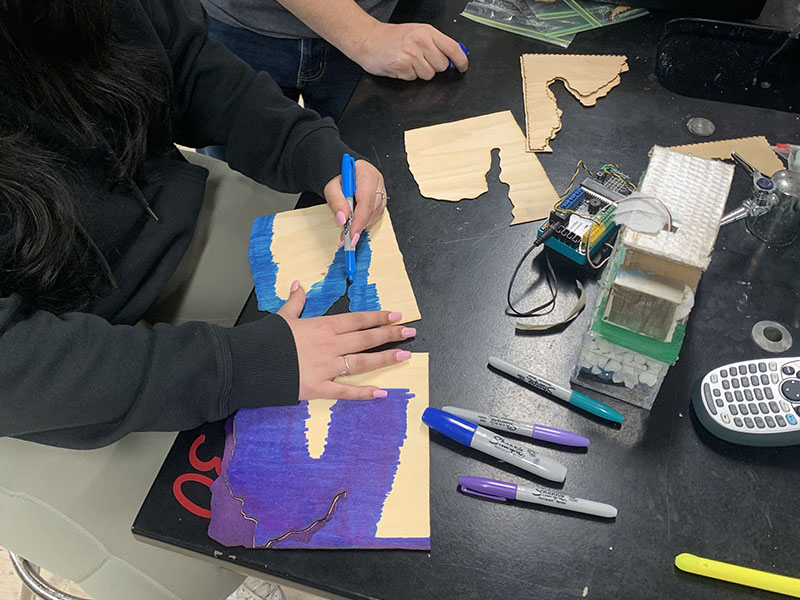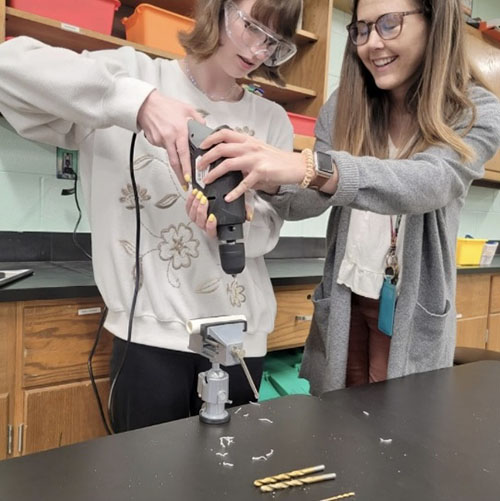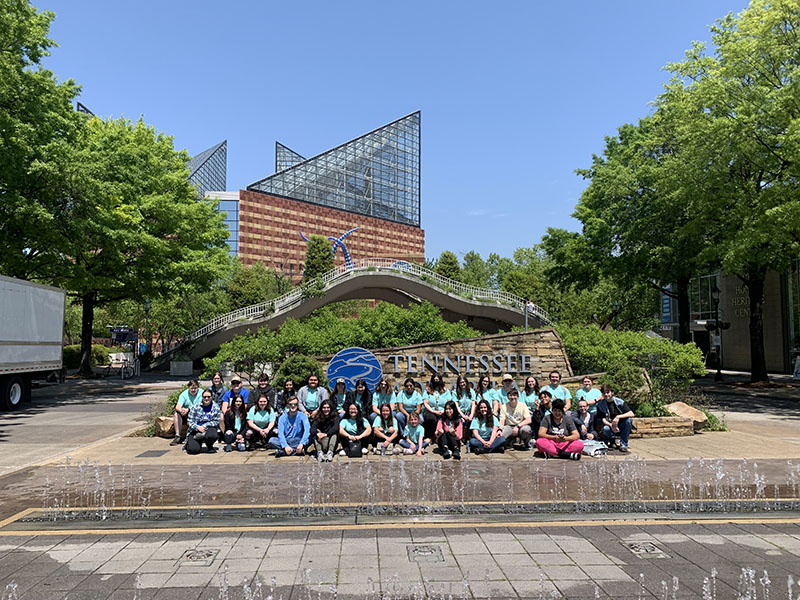Students in the Midwest Dive Deep into Marine Biology
July 11, 2022
A project update from Butler County High School (Kentucky), a recipient of an Ocean Exploration Education grant to build capacity for ocean literacy and Science, Technology, Engineering and Mathematics (STEM) workforce development.
Determined to bring ocean exploration to her students at Butler County High School, a Title 1 School in rural Kentucky, second-year biology teacher Emily McAfee applied for ocean exploration education grant funding. Her goal was to inspire students to explore STEM careers through a project titled “Diving Deep into Marine Biology,” which included developing curriculum and purchasing supplies for a semester-long marine biology course that covered such topics as ocean exploration, conservation, and STEM careers through student-led, hands-on projects. She was awarded grant funds from NOAA Ocean Exploration and the National Marine Sanctuary Foundation for her project’s merits in building capacity for ocean literacy and STEM workforce development in a community that is located over 350 miles from the ocean.
A student in Butler County High School’s Marine Biology class tests out a remotely operated vehicle with waterproofed motoring and wires that she and other students built through the engineering design process. Video courtesy of Emily McAfee. Download largest version (mp4, 13.9 MB).
Project funds enabled 36 juniors and seniors to learn about ocean processes, seafloor features, underwater technology, and human impacts on the ocean, among other topics, over the course of 18 weeks. Throughout the semester, students created 3D models of seafloor features such as seamounts from NOAA Ocean Exploration bathymetric data from the Northwestern Hawaiian Islands. Students also designed, built, and tested remotely operated vehicles (ROVs) using SeaPerch kits and curriculum. Through the practical experience of designing an ROV, students were exposed to the iterative engineering design process, gained experience recording data, and were able to develop their own websites to communicate their scientific results and document the process from concept to completion.

Three examples of bathymetric 3D models of seafloor structures created by students using laser technology in Emily McAfee’s marine biology class. Models include deep-sea ridges, canyons, and seamounts. Image courtesy of Emily McAfee. Download largest version (5.7 MB).

Students build a 3D bathymetric model out of wood using data and false-color maps. Later, students are given an engineering design challenge to create a remotely operated vehicle capable of exploring their seafloor feature. Image courtesy of Emily McAfee. Download largest version (2.8 MB).

Teacher Emily McAfee (right) guides a student in drilling holes in PVC pipes used to construct a remotely operated vehicle. Image courtesy of Emily McAfee. Download largest version (184 KB).
To dive deeper into underwater technologies and careers in ocean exploration, McAfee’s class participated in a virtual live interaction with ocean explorers at sea on Ocean Exploration Trust’s Exploration Vessel Nautilus, where they were able to ask questions about deep-ocean discoveries and technologies aboard the ship. The class also visited the Tennessee Aquarium in Chattanooga, Tennessee, where they were able to explore some of the diverse organisms that are found in the ocean and learn about the connection from inland communities to deep-sea environments.

Students from Butler County’s marine biology class and STEM Club visit the Tennessee Aquarium to bring their studies to life. Image courtesy of Emily McAfee. Download largest version (5.3 MB).
Students in the marine biology class partnered with students in the school’s STEM Club to plan and execute an outreach event for 27 local elementary students, carrying the lessons they learned forward to the next generation of young explorers and stewards.
Learn more about the project from Emily McAfee’s guest blog featured on the National Marine Sanctuary Foundation website.
Published July 11, 2022